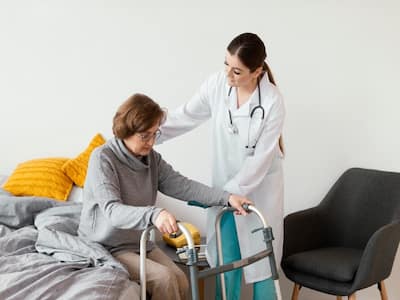Don’t Miss Out on the Latest Updates.
Subscribe to Our Newsletter Today!
World Patient Safety Day: How To Ensure Patient Safety In Home Healthcare

There's no place like home. With medical care increasingly shifting from hospital to home, it is imperative to patient safety and quality in home healthcare.
Patient safety has evolved and developed over time. Today, when home healthcare is becoming an integral part of managing and treating patients, their safety and the quality of care in this setting also needs a serious thought. As per estimates, the global home healthcare market size is expected to reach $298.2 billion by 2026. However, apart concerns regarding patient safety are a limiting aspect to this growth. On World Patient Safety Day, it is imperative to revisit the areas where patient safety in the home healthcare setting needs to be relooked at.
Home healthcare seeks to provide quality care in a way that honors the autonomy of a patient, accommodating their individual preferences and that of their families. However, while we may assume that patients will be safer at home, adverse events cannot be ruled out in any setting. We may not be able to foresee all possible hazards, but there are certain aspects where the quality of care and safety become paramount.
Hazards at home
There are several leading causes of unintentional home injuries most common being falls in the elderly. Another most studied safety issue at home is an adverse drug event which may occur due to poor communication between hospital staff, patients and doctors. As per a study, about 35 per cent of readmissions to hospitals are due to incorrect drug administration at home. 'Medication without harm' is also the theme of the World Patient Safety Day this year. Unsafe medication practices and errors are a leading cause of avoidable harm in healthcare globally. These occur due to a lot of human factors including fatigue and shortage of people to care for patients.
Also Read
What can be done?
Given how there is an increasing shift of medical care from hospital to home, the need of the hour is to examine patient safety in the home environment. One of the ways to do this is to increase the reliability of the care system. The two areas where work is needed in this context are the culture and learning system. Home healthcare can become the standard of care if best practices are adopted widely. This includes instilling confidence in family caregivers about access to support; ensuring that the training of the caregiver workforce is done in a manner that they begin to work holistically rather than just providing the specific services for which they are reimbursed. There would be minimum harm, coordinated care, and safety of practices.
As with every other sector, technology in home healthcare also has a central role in enabling remote patient monitoring and interventions. This can prove beneficial for various chronic illnesses, timely update on medication schedules, check-ups, etc. Technology can also help in enabling real-time communication between doctors and patients. Last but not the least, it helps in the self-management of many critical conditions making home care interventions specific and effective. There is a need for awareness among new home healthcare companies about the need for quality training which will make the home environment safer. It will also help in preventing any mismanagement and in maintaining the highest standard of care for patient safety in India.
Individuals, organizational leaders, and policy makers in the home healthcare setting must come to an understanding of the potential considerations around patient safety in the home care setting to be able to take necessary actions to improve the scenario. Safety in the home healthcare setting deserves as much attention as prevention of harm, creation of a safe culture, use of standard practices, and resource allocation in the institutionalized setting.
This article is authored by Vaibhav Tewari, Co-Founder & CEO, Portea Medical.


